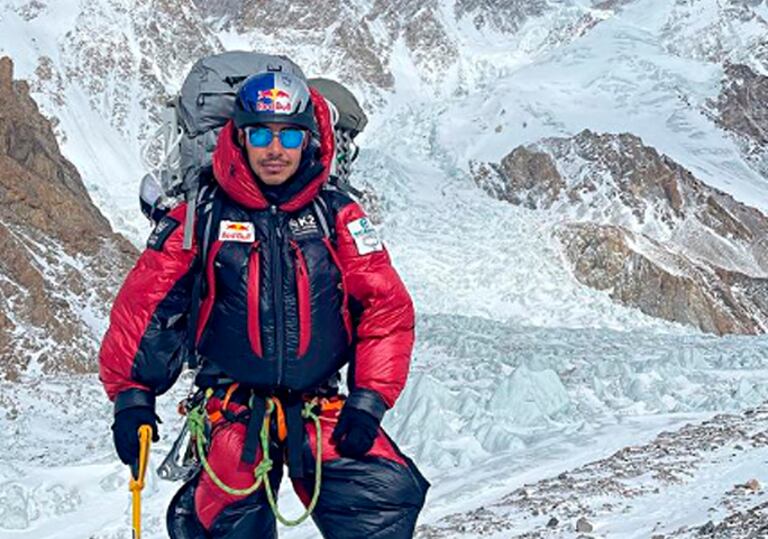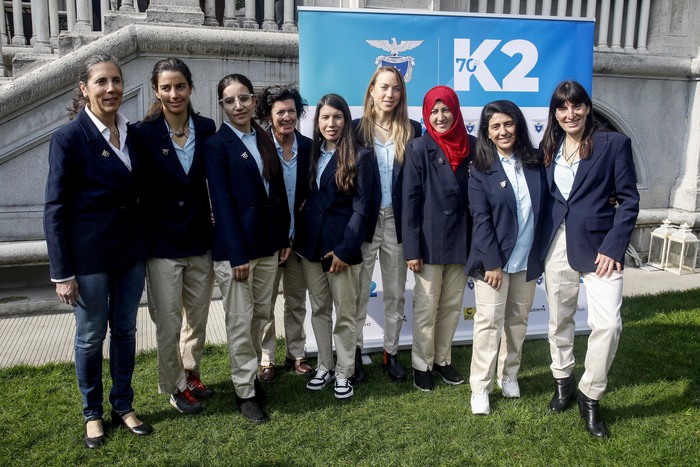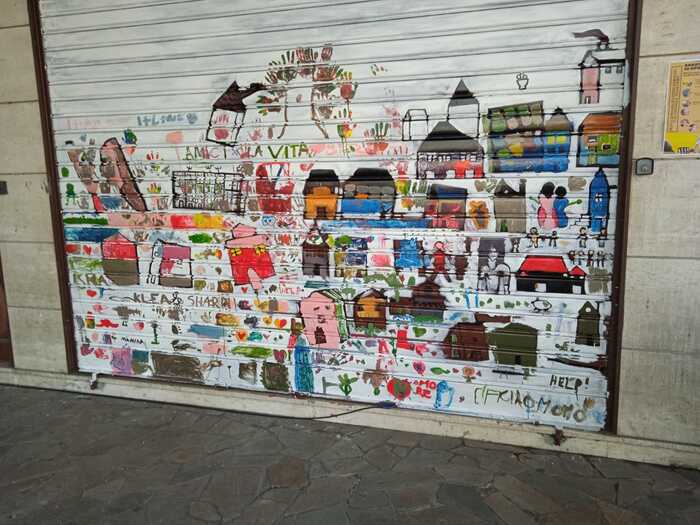Nirmal Purja, on the way to field 1 of K2, in an image on his Instagram account. INSTAGRAM
Climbing the highest mountains on the planet in the middle of winter was a Polish occurrence originated in their circumstances: when the communist regime relaxed its control and the Polish mountaineers were able to look out into the world, there were no longer eight thousand to conquer, so they had to reinvent the challenges related to some fascinating peaks.
His cover letter was an unprecedented ordeal.
On February 17, 1980, Krzysztof Wielicki and Leszek Cichy sneaked to the top of Everest (8,848 m), launching a plan: to reconquer the 14 eight thousand in winter.
40 years have passed and the? Polish dream almost caresses its end.
Only K2, the second highest mountain on the planet (8,611 m), has not yet been climbed in winter and this despite Polish insistence, a country that accumulates a total of nine winter firsts and a tenth shared with Simone Moro, the Italian which rescued from oblivion in 2005 the passion for winter eighthomilismo.
The all-altering coronavirus has also conditioned the march of Himalayanism, turning the tremendous challenge of
knocking down
K2 in winter into a commercial matter.
Spring in Nepal has been an economic disaster for the country and for the families of its mountain workers.
Without tourists or expeditions, agencies as powerful as Seven Summits, founded and run by Nepalese of the Sherpa ethnic group, have found it necessary to reinvent themselves by offering their clientele the dream and glory of conquering winter K2.
A nonsense?
Soon many pedigree mountaineers, such as the Polish Adam Bielecki, have shown their amazement at the possibility that a historic moment is reduced to a mere commercial transaction with more than 25 Sherpas working to sneak some of their clients to the top.
Recent Polish attempts at K2 were carried out without using artificial oxygen so as not to alter the magic and difficulty of the challenge.
Seven Summits will use bottled oxygen.
“It's like winning the Tour de France on an electric bike.
It would have neither ethics nor would it be honorable ”, summed up in his social networks Bielecki, author of the first two to eight-thousand winter: Gasherbrum I (2012) and Broad Peak (2013).
Reference mountaineers criticize the zero experience of Seven Summits customers: “They cannot imagine everything there is to know to face an eight-thousand in winter, the tricks to know to avoid freezing, how hard it is.
They have paid between 25,000 and 53,000 euros but they are not going to reach the top or by chance, ”says Álex Txikón, these days on his way to winter Manaslu.
In total, it is estimated that at the foot of the normal route of K2, the Abruzzos spur, a total of 75 mountaineers divided into four teams have gathered: the Seven Summits has almost 60 members, of which 28 are workers Sherpas of experience and the rest clients with varying degrees of autonomy and experience.
Here are the Spanish Sergi Mingote and the Chilean Juan Pablo Mohr (they say they are not clients but co-leaders in the tasks of equipping the route with the Sherpas), the Romanian Alex Gavan and the Italian Tamara Lunger, remembered for turning around 70 meters from the top of Nanga Parbat on the day of its conquest in winter.
Around this great expedition three small groups unfold: the Sapdara, Ali and Sajid Ali, father and son, working for the Icelandic John Snorri;
three level Sherpa mountaineers (Mingma Gyalje, Dawa Tenzin and Kili Pemba) and, to close the circle of Sherpa leadership is the star of the moment, Nirmal Purja, the man who recently climbed the 14 eight thousand in just six months and whose considerations Ethics are lax.
The latter travels with five workers and has announced, against the forecast, that it will do without bottled oxygen.
No more than 10 will face K2 without the precious cylinders.
While alpinists of the stature of Simone Moro point out with concern the lack of experience of many of the applicants, the different teams are already equipping the lower sections of the mountain.
"I don't know how they are going to organize themselves: there isn't even room for so much store in the high altitude fields," Txikón is horrified.
In 1980, Andrzej Zawada, leader of the Polish winter expedition to Everest, could not understand how they were alone in base camp: did Westerners have no imagination?
His leadership work was exemplary: when his mountaineers retired shattered, the expedition threatened ruin, so he decided to try it without the necessary acclimatization.
He reached 8,000 meters and his example restored the group's morale.
Days later, at 2:25 p.m. on February 17, the radio cleared his throat in the main tent of the base camp: nothing was understood.
Zawada asked Cichy to speak again.
Suddenly, a question was heard with great clarity: Guess where we are?
They all knew they were at the top, the highest point on the planet.
It would be expected that four decades later the conquest of winter K2 was not a matter of siege, of kilometers of fixed ropes, hundreds of oxygen cylinders, guides trying to ensure the lives of their clients, overcrowding in high altitude fields, confusion and opportunism commercial.
Mountaineering has come so far in the last 40 years that imagining a brilliant epilogue in the history of conquering the winter eight thousand should not be utopian.
The conquests in winter
Everest.
1980. Krzysztof Wielicki and L. Cichy (Poland)
Manaslu.
1984. Maciej Berbeka and R. Gajewski (Poland)
Dhaulagiri.
1985. Jerzy Kukuczka and Andrzej Czok (Poland)
Cho Oyu.
1985. Maciej Berbeka, Maciej Pawlikowski, Zygmunt Heinrich and Jery Kukuczka (Poland)
Kanchenjunga.
1986. Jerzy Kukuczka and Krzysztof Wielicki (Poland)
Annapurna.
1987. Jerzy Kukuczka and Artur Hajzer (Poland)
Lhotse.
1988. Krzysztof Wielicki (Poland)
Shisha Pangma.
2005. Piotr Morawski (Poland) and Simone Moro (Italy)
Makalu.
2009. Simone Moro (Italy) and Denis Urubko (Russia)
Gasherbrum II.
2011. S. Moro (Italy), Denis Urubko (Russia) and Cory Richards (USA)
Gasherbrum I. 2012. Adam Bielecki and J. Golab (Poland)
Broad Peak.
2013. Maciej Berbeka, Adam Bielecki, Artur Malek, T. Kowalski (Poland)
Nanga Parbat.
2016. Alex Txikón (Spain), S. Moro (Italy) and A. Sadpara (Pakistan)









